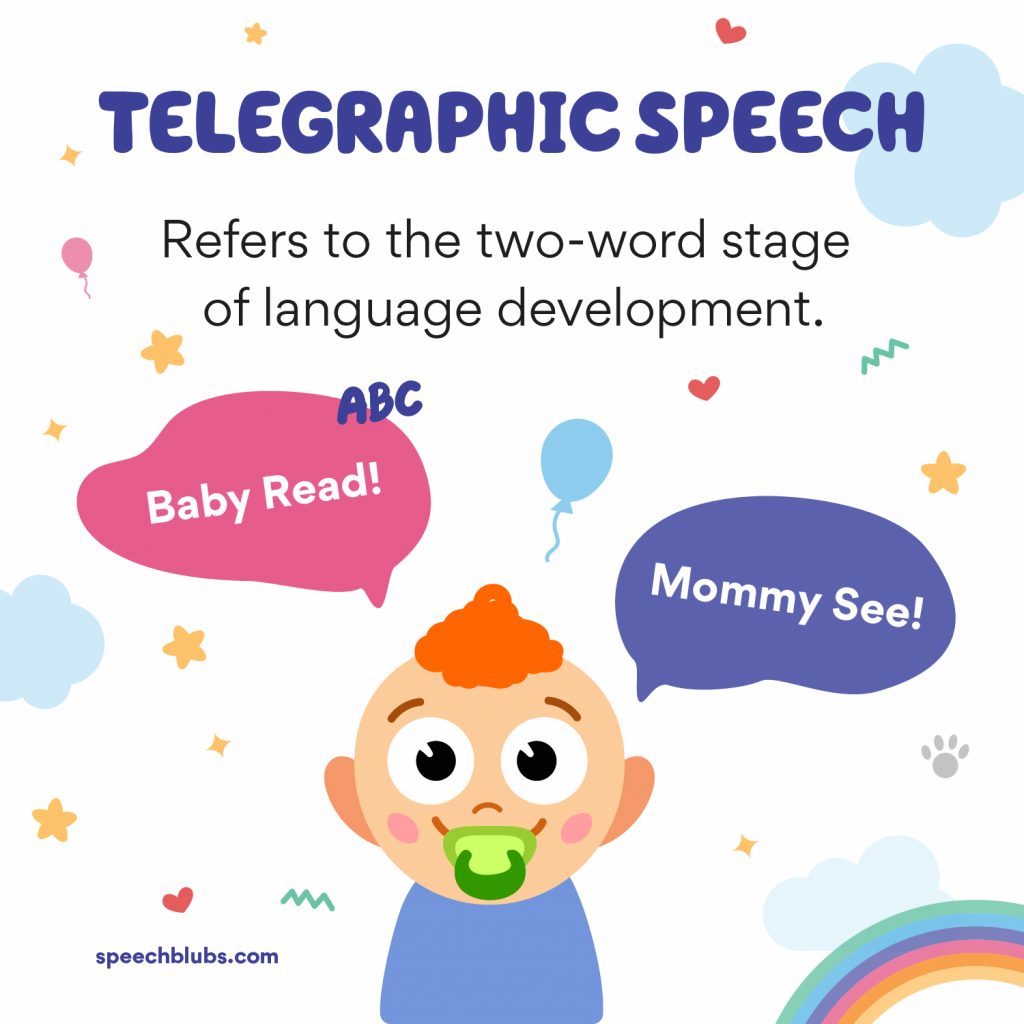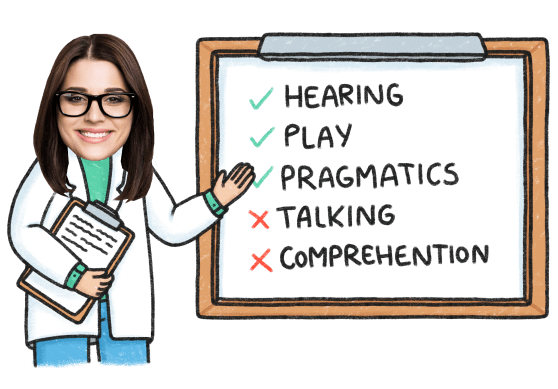Child Development: When Should My Child Combine Words?
Feb 6, 2022 This blog explores when typical children combine words, and provides some activities to do at home to help your child perform this skill.
One of the most worried about concerns for parents regarding child development is to know when their child will be able to communicate effectively. It’s so much easier when they can tell you what they want, need, or if anything is wrong. Please remember, especially in their early years, kids develop at different times depending on their hereditary and environmental situations.
If there is a syndrome, disorder, or cognitive impairment, it will affect your child’s ability to learn and utilize language.

Language Development with Speech Blubs
Speech Blubs is a fantastic speech therapy app with a library of more than 1,500 activities, face filters, voice-activated activities, and educational bonus videos. Explore everything from “Early Sounds” to the “Build a Sentence” section and watch your child learn right away!
Boost Your Child’s Speech Development!
Improve language & communication skills with fun learning!

Language Development Process
Telegraphic speech refers to the two-word stage of early childhood language development. For example, your baby will say “Mommy See!” or “Baby Read!”

As far as developmental milestones go, according to the American Academy of Pediatrics (AAP), a child should say his first word by 15 months of age. Another milestone that gets less attention, but is also important, is when children start to string word combinations together.
When a child first starts to attempt this milestone, their combinations will be nouns and actions, such as “mommy go,” or “daddy up.” As their language skills develop and improve, they will start to include things like verbs (actions).
An example of this might be, “car go.” These combinations that include verbs are important as they set the stage for the child’s grammar skills to develop. Children should be combining two words together by 24 months of age (Bright Futures: Guidelines for Health Supervision of Infants, Children, and Adolescents (3rd ed.)).
A recent study looked at children’s first words and first word combinations, and whether delays in either of these milestones predicted later language problems. Interestingly, children who were late combining words were more at risk for future problems with language than children who were late with their first words (Journal of Early Intervention, 38 (1) (41–58)). This means that if your child is delayed in speaking, it’s not as important as when your child starts combining words.
As a speech pathologist, I get a lot of questions from parents as their child develops through these stages and enters toddlerhood. Here are some frequently asked questions answered about child development!
Are “thank you” and “night-night” examples of word combinations?
Many children use these words early on and parents think that they are using two-word combinations. However, these phrases are “chunked” and are memorized. This is different than learning two different words and combining them together. If your child is saying, “thank you, mom,” then that’s an example of combining two different words.
My child uses a ton of single words. Is he ready to combine them?
This comes from SLP Lauren Lowry in her article “Combining Words Together: A Big Step in Language Development” where she says that before a child can combine two words together, he must be able to:
1. Use a variety of words
Children need more than just nouns (names of people, places, and things) in their vocabulary to combine words. Once they can use some early verbs (action words like “go,” “pour,” or “give”), adjectives (words that describe like “hot,” “big,” or “fast”), and/or prepositions (location words like “on,” “in,” or “off”), they have the building blocks to combine words together. These words are typically developed by 18 months of age.
2. Express two ideas
Before expressing two ideas with two-word combinations, children can usually express two ideas by using a word and a “supplementary” gesture, which adds additional information to the word that is spoken. For example, when a child points to the cookie jar and says “Mommy,” his message has two ideas: he wants Mommy to give him a cookie.
Or when a child does an action for “big” with his arms while pointing to a large teddy bear, his message has two ideas: the bear is big. This shouldn’t be confused with the child’s use of gestures that match the meaning of his word (e.g. pointing to a cookie and saying “cookie”), as this only expresses one idea.
When a parent tells me that their child is using more than just nouns, then their child is probably ready to start combining words into phrases.
My child isn’t combining words, should I be concerned?
If your child is 24 months or older and not combining words, it’s important to talk to your pediatrician and get a referral for a speech-language pathologist. They will assess your child’s skills and development to determine if speech therapy is warranted.
5 Ways to Help Your Child Combine Words
1. Follow your child’s lead
Children need practice and repetition when it comes to sending and receiving verbal messages. In order to encourage voluntary communication, you need to follow your child’s lead and see what he/she is doing.
Wait for him/her to send you a message and give them a chance to respond before jumping right in. Make sure you get down on his/her level and comment on everything he/she is doing.
2. Emphasize a variety of words
When you play and interact with your child, emphasize new words that are based on his interests at that moment. Use actions and your voice to make these new words stand out.
Think about highlighting words other than just nouns, such as simple verbs (e.g. “stop,” “push,” or “wash”), adjectives (e.g. “small,” “soft,” or “cold”), and prepositions (e.g. “in,” “on,” “down,” or “up”).
Verbs are especially important for building early sentences and for the development of children’s grammar skills. Play with a teddy bear to model the words!
3. Model short, grammatical sentences
Even though children’s first-word combinations lack proper grammar (e.g. “go car,” “want juice,” or “me up”), it’s important that you provide your child with models that are grammatically correct. This means you shouldn’t imitate his poor grammar and vocabulary.
Make sure you are talking to them in short, simple phrases, but using correct grammar. This helps your child understand how words are used together and what the words mean. For example, if your child says “go car” when he is getting in the car, you can say “You are going in the car.”
4. Expand your child’s words
You can expand your child’s language by using his single word in a short sentence. If your child says “fast” while pushing a car, you can turn that into a little sentence like “The car is fast!” Or, if he smiles while eating a cookie and says “cookie,” you can say “It’s a yummy cookie.”
5. Add gestures to your words
When you use gestures while you speak, it shows your child how to use gestures and words at the same time. This will prepare your child for using supplementary gestures.

